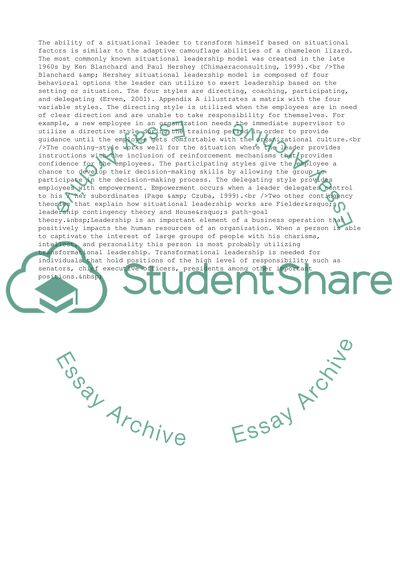Cite this document
(Situational Leadership Assignment Example | Topics and Well Written Essays - 1500 words, n.d.)
Situational Leadership Assignment Example | Topics and Well Written Essays - 1500 words. https://studentshare.org/management/1720963-situationaltransformational-hr-leadership
Situational Leadership Assignment Example | Topics and Well Written Essays - 1500 words. https://studentshare.org/management/1720963-situationaltransformational-hr-leadership
(Situational Leadership Assignment Example | Topics and Well Written Essays - 1500 Words)
Situational Leadership Assignment Example | Topics and Well Written Essays - 1500 Words. https://studentshare.org/management/1720963-situationaltransformational-hr-leadership.
Situational Leadership Assignment Example | Topics and Well Written Essays - 1500 Words. https://studentshare.org/management/1720963-situationaltransformational-hr-leadership.
“Situational Leadership Assignment Example | Topics and Well Written Essays - 1500 Words”. https://studentshare.org/management/1720963-situationaltransformational-hr-leadership.


